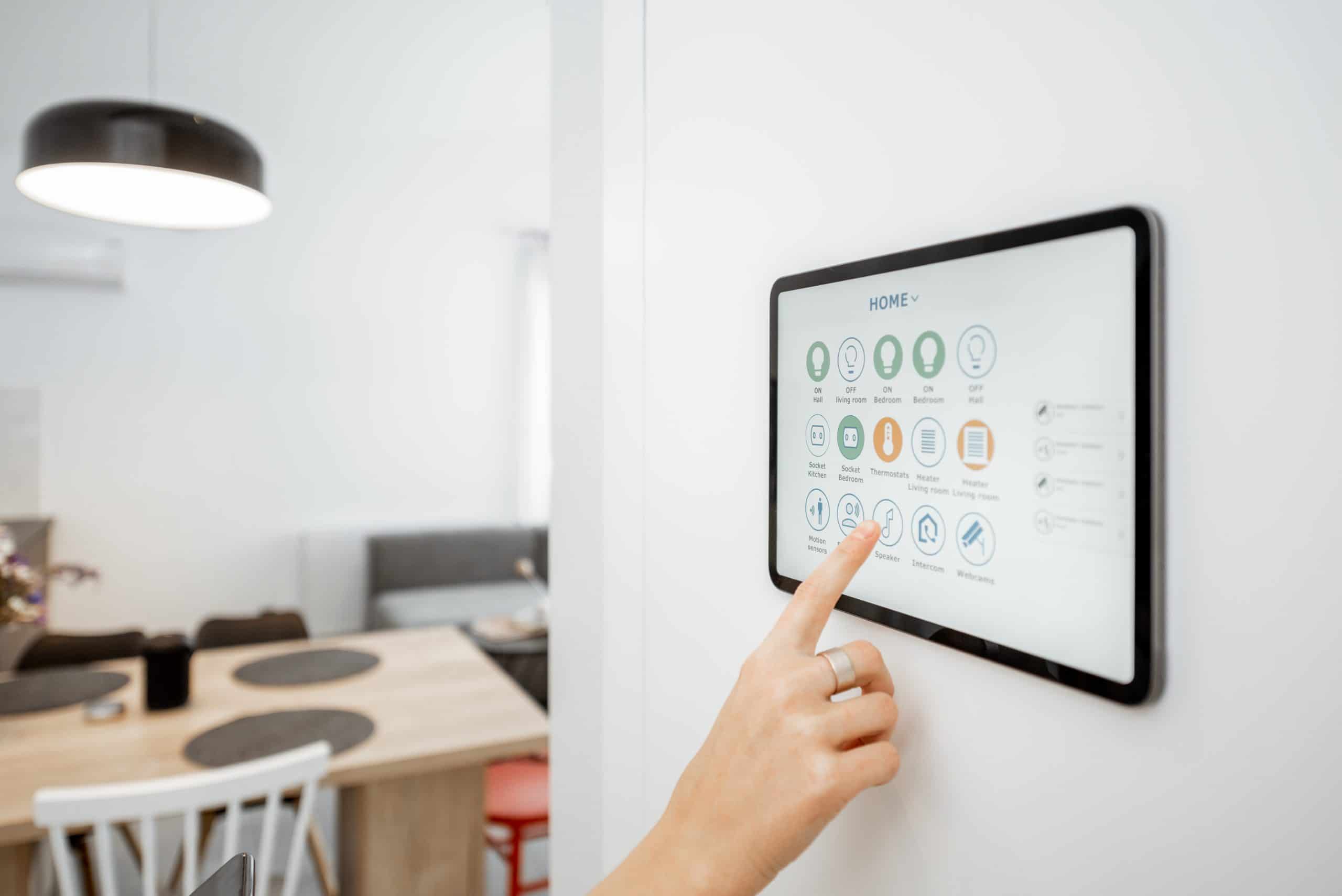Referred to interchangeably as Industry 4.0, IoT, or the “Internet of Things,” this technology is quickly becoming a common part of everyday life.
Since it’s likely going to become a bigger part of your life in the near future, there are some things about IoT you should know. While IoT has a good chance of improving the ease and efficiency of many areas of your life, the technology has some inherent risks that all users should acquaint themselves with.
What is IoT?
IoT is a catch-all term for physical devices that connect to the Internet. More specifically, it refers to a network of connected devices with unique identifiers that can send data to each other.
As an everyday consumer, you’ll most often hear it in reference to smart home appliances or other “smart” hardware. That includes smart thermostats, smart speakers, smart lighting, and other everyday gadgets that you can control remotely from a smartphone or other interface.
Of course, IoT has the potential to extend far beyond your household appliances. It can include smart traffic lights, a wearable, or a pet locator chip. The future is likely to hold smarter city infrastructure and business tools, but the devices you keep in your home generally play a more intimate role in your life.
Cybersecurity Concerns for IoT Devices
IoT devices are vulnerable to cyberattacks, like every piece of technology that connects to the internet. From a hacker’s perspective, every new device is one more access point to infiltrate your network.
It’s important that we develop robust cybersecurity measures that can protect IoT devices and the sensitive data they carry from malicious actors.
If you are wondering how overwhelmed our current security systems are, during the COVID-19 pandemic, there were over 4,000 cyberattacks every day, with experts estimating the average household is hit with 104 threats each month.
While hacking T-Mobile or the Colonial Pipeline might result in flashy headlines and hefty paydays, a lot of cyberattacks are targeted at households and individuals. That’s why it’s crucial to secure every piece of interconnected tech on your network! Your personal computers, tablets, and phones can give attackers access to your private information including bank accounts, health records, credit card data, confidential emails, and much more.
Become a Cybersecurity Professional
While the demand for cybersecurity professionals has grown steadily along with the increased adoption of technology over the past decade, the COVID-19 pandemic has accelerated the move to remote work, skyrocketing e-commerce adoption, and the proliferation of IoT devices.
All of these factors are contributing to a sharp increase in the demand for skilled cybersecurity professionals.
If you are interested in pursuing a career in cybersecurity and defending our digital world, the Nexus at University of Michigan Engineering Cybersecurity Professional Bootcamp can help you gain the foundational skills you need to succeed in this skyrocketing field.
The way the bootcamp works is really simple:
- All classes are conducted live and online, two sessions on weeknights and one on Saturdays.
- Your instructors will be cybersecurity experts who work in the field.
- You will practice cybersecurity skills through hands-on simulations and cyber labs that mimic real-world cybersecurity scenarios.
- The whole program is a total of 420 hours of in-depth cybersecurity instruction and takes about 11 months to finish.
- The Nexus’ Cybersecurity Professional Bootcamp includes a dedicated career services department that can guide you along your cybersecurity journey.

Benefits of IoT devices
Because IoT opens up the door to automation and easy control access, it can have a number of benefits for all types of consumers. Here are a few.
- Efficiency and cost savings: IoT devices tend to be more efficient since they perform tasks more intelligently and let users control actions remotely. That will make some parts of your life easier, and could even have the benefit of reducing your energy costs, too.
- Deeper insights: Most, if not all, IoT devices produce data. Many of them allow you to see that data. Although the exact interface depends on the type of device and manufacturer, the ability to see data like household temperature could give you deeper insights into your home and everyday life.
- Automation: It’s hard to overstate the convenience of automation. Have an IoT setup? You’ll be able to preset your devices to perform various actions or “scenes” right as you arrive home. That could include switching on the thermostat, turning on various lights, and playing your favorite playlist.
Downsides of IoT devices
National Cybersecurity Awareness month is a good time to familiarize yourself with some of the potential downsides of IoT hardware. And there are downsides.
- Internet-dependent: IoT devices, by their very nature, are highly dependent on an Internet connection. While that allows for most of their benefits, it also means a simple power outage could bring down your smart home. Typically, they also rely on a third party’s servers. That means any sort of failure on the manufacturer’s end could affect your setup.
- Upkeep and obsolescence: The pace of technological advancement is hard to keep up with. In fact, it’s even hard for experts to guess what kind of technology we’ll be using in just a few years. Because of that, IoT hardware can become obsolete fairly quickly, meaning you’ll eventually end up needing to replace them.
- Security risks: Basically, anything that can connect to the Internet can be compromised by a hacker. Worse still, many IoT devices feature less than ideal security measures. In fact, while roughly 84% of organizations have IoT devices on their corporate networks, more than 50% of them don’t maintain necessary security measures beyond default passwords.
There are many ways you can keep your personal IoT devices secure from cyberattacks. Here below is our advice for living your best IoT-enabled life:



